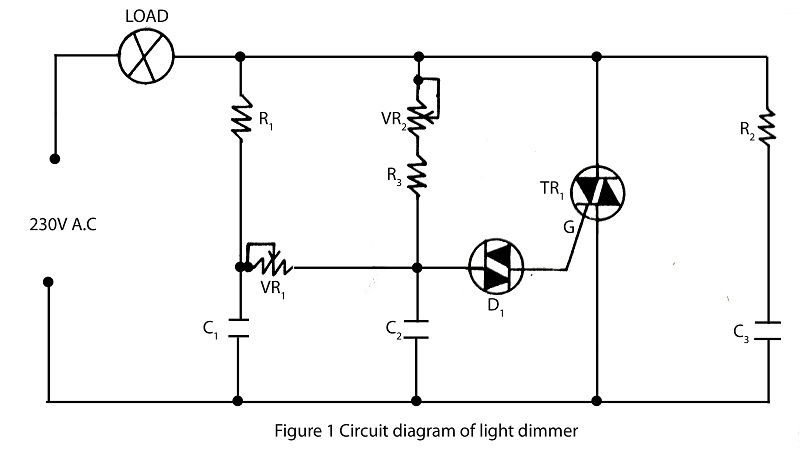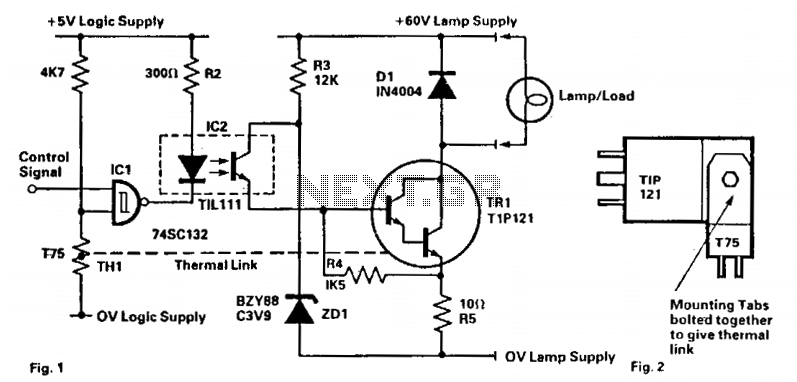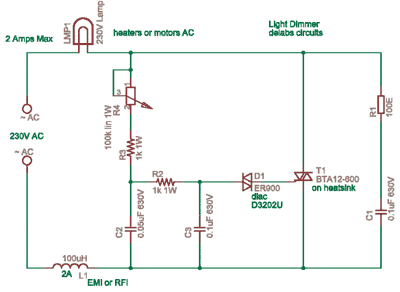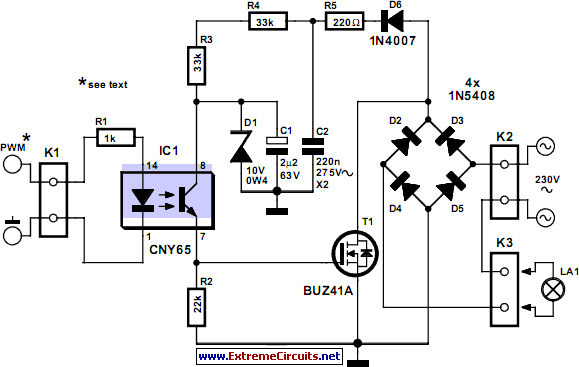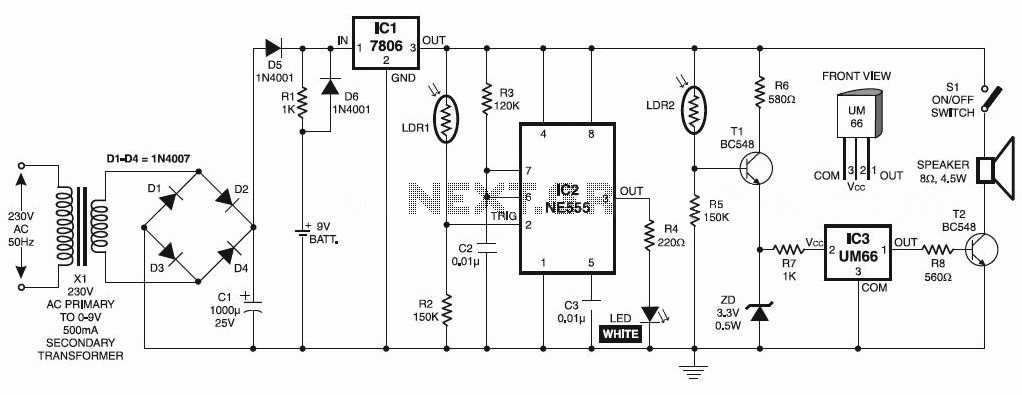
Dc lamp dimmer
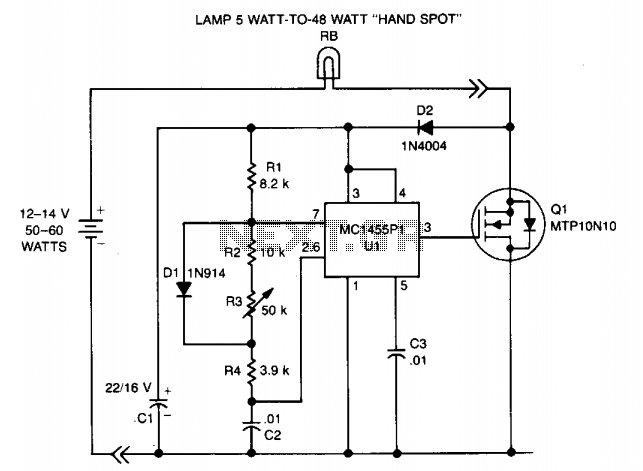
A low power, low cost DC lamp dimmer for a two-wire portable flashlight can be implemented with minimal or no heatsinking requirements. A single potentiometer, R3, is utilized to adjust the brightness of the lamp. Battery power is stored in capacitor C1 for the operational amplifier U1, which functions as a free-running multivibrator. The frequency of this multivibrator is determined by resistors R1, R2, R3, R4, and capacitor C2.
U1 drives the gate of transistor Q1, enabling it to switch the lamp ON and OFF at a frequency that is proportional to the duty cycle of the multivibrator.
This circuit operates on a simple principle of pulse-width modulation (PWM), allowing for efficient control of the lamp's brightness without significant power loss. The multivibrator generates a square wave signal, which modulates the power delivered to the lamp. The duty cycle of this signal, adjustable via the potentiometer R3, determines the average power reaching the lamp, thus controlling its brightness.
The components involved play specific roles: the capacitors (C1 and C2) store energy and help determine the timing characteristics of the multivibrator, while the resistors (R1, R2, R3, and R4) set the frequency and duty cycle of the PWM signal. The transistor Q1 acts as a switch, responding to the output from the multivibrator to control the lamp's operation.
This design is particularly advantageous for portable applications, such as flashlights, where battery life and heat management are critical. The low power consumption and minimal heat generation make this circuit suitable for long-duration use, ensuring that the flashlight can operate efficiently without overheating or requiring complex thermal management solutions.A low power, low cost dc lamp dimmer for a two-wire portable "flashlight" can be realized with little or no heatsinking. In addition, a single potentiometer, R3 adjusts lamp brightness. Battery power is stored in Cl for Ul, which is a free-running multivibrator whose frequency is determined by Rl, R2, R3, R4, and C2.
Ul drives the gate of Ql, turning it and the lamp ON and OFF at a rate proportional to the multivibrator duty cycle.
U1 drives the gate of transistor Q1, enabling it to switch the lamp ON and OFF at a frequency that is proportional to the duty cycle of the multivibrator.
This circuit operates on a simple principle of pulse-width modulation (PWM), allowing for efficient control of the lamp's brightness without significant power loss. The multivibrator generates a square wave signal, which modulates the power delivered to the lamp. The duty cycle of this signal, adjustable via the potentiometer R3, determines the average power reaching the lamp, thus controlling its brightness.
The components involved play specific roles: the capacitors (C1 and C2) store energy and help determine the timing characteristics of the multivibrator, while the resistors (R1, R2, R3, and R4) set the frequency and duty cycle of the PWM signal. The transistor Q1 acts as a switch, responding to the output from the multivibrator to control the lamp's operation.
This design is particularly advantageous for portable applications, such as flashlights, where battery life and heat management are critical. The low power consumption and minimal heat generation make this circuit suitable for long-duration use, ensuring that the flashlight can operate efficiently without overheating or requiring complex thermal management solutions.A low power, low cost dc lamp dimmer for a two-wire portable "flashlight" can be realized with little or no heatsinking. In addition, a single potentiometer, R3 adjusts lamp brightness. Battery power is stored in Cl for Ul, which is a free-running multivibrator whose frequency is determined by Rl, R2, R3, R4, and C2.
Ul drives the gate of Ql, turning it and the lamp ON and OFF at a rate proportional to the multivibrator duty cycle.
